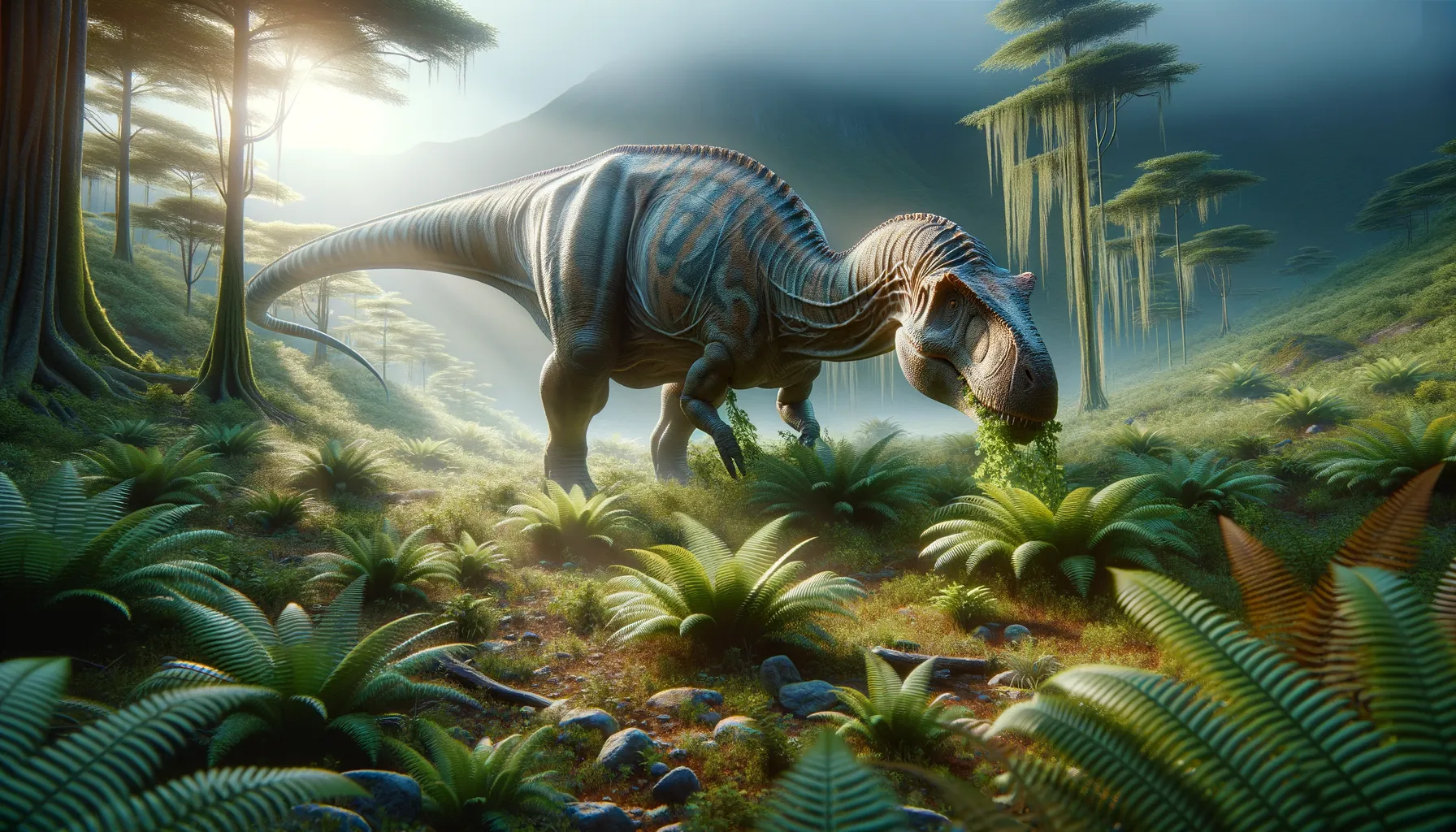
Lapampasaurus
Grazing the ancient lands of Argentina.
Period
Cretaceous
Length
Estimated to be 7 to 8 meters in length.
Height
Approximated at 3 to 4 meters tall.
Weight
Roughly estimated to be around 2 to 3 tons.
Lapampasaurus was a herbivorous dinosaur that roamed the earth during the Cretaceous period. It primarily resided in what is now South America. This dinosaur was heavy-built with significant size, allowing it to graze higher vegetation. Its fossilized remains have provided crucial insights into the migratory patterns of herbivorous dinosaurs of the region, unveiling critical aspects of their ecology and behavior that helped them thrive in their habitats.
Diet
Lapampasaurus was an herbivore, feeding primarily on vegetation available during its time. It likely consumed a variety of plants, including ferns, cycads, and conifers, which were abundant during the Cretaceous period.
Hunting
As a herbivore, Lapampasaurus did not engage in hunting behaviors. Instead, it foraged for plants, using its sharp beak to clip vegetation and its large body to fend off predators when threatened.
Environmental challenges
Lapampasaurus faced various environmental challenges such as climate fluctuations that affected the availability of plant resources. Periods of drought could significantly disrupt their food supply, impacting their health and population numbers. Competition with other herbivores for limited resources was also a significant challenge, requiring strategic grazing habits. Predation risk from large carnivorous dinosaurs necessitated awareness and defense strategies within their herds.
Speed
Lapampasaurus was likely moderately fast for its size.
Lifespan
Estimated around 30 to 40 years in the wild.
First discovery
First discovered in La Pampa, Argentina, in 2017.
Fun Facts
- Lapampasaurus was a plant-eating dinosaur that lived during the Late Cretaceous period.
- The name 'Lapampasaurus' comes from La Pampa, a province in central Argentina where its fossils were discovered.
- Lapampasaurus is part of the hadrosaur family, also known as duck-billed dinosaurs due to their unique snouts.
- This dinosaur is believed to have roamed in large herds, providing protection from predators.
- The fossils of Lapampasaurus help scientists understand more about the diverse dinosaur communities in South America.
- Unlike some of its relatives, Lapampasaurus had fewer specialized teeth, suggesting a varied plant diet.
- Lapampasaurus' fossils offer clues about the climate and environment of its time, revealing changes in ancient ecosystems.
Growth and Development
Lapampasaurus grew rapidly in its early years, reaching significant sizes that helped deter predators. Its development involved the formation of robust limbs for support and mobility. Growth rates varied based on resource availability, with better access to food enabling faster development. Juveniles stayed close to adults for protection and guidance in their early life stages.
Habitat
Lapampasaurus inhabited floodplains and forested areas near river systems that provided ample food. These environments offered the necessary resources for grazing and nesting, allowing the species to thrive. Seasonal variations in these habitats affected the availability of water and food, influencing their movement patterns. Their environment was shared with diverse species, fostering a dynamic ecosystem.
Interaction with other species
Lapampasaurus coexisted with various other dinosaur species, both herbivorous and carnivorous. This coexistence led to complex interactions, including competition for resources with other herbivores. Defensive behaviors were crucial in deterring predators, which were constantly on the lookout for vulnerable individuals. Mutualistic relationships may have existed with smaller species that helped in pest control, benefiting both parties.
Natural lifespan
Lapampasaurus naturally lived around 30 to 40 years.
Reproduction
Lapampasaurus likely reproduced by laying eggs in secure, well-hidden nests. They might have engaged in seasonal breeding to synchronize with optimal environmental conditions. Parental care was probably limited, but females may have guarded nests to ensure the offspring's survival. Hatchlings were vulnerable and relied heavily on their size and group living for protection as they matured.
Social behaviour
Lapampasaurus likely lived in herds that provided protection from predators. Social behavior included cooperative foraging and movement in response to environmental cues. The herd structure enabled young and old alike to benefit from collective vigilance against threats. This social dynamic also facilitated breeding opportunities and ensured genetic diversity within populations.
Fossil locations
Fossils of Lapampasaurus have predominantly been found in La Pampa, Argentina. These discoveries have been dated to the late Cretaceous, providing insights into its existence during this time. The distribution of fossils indicates the dinosaurs' preference for river-bound landscapes with lush vegetation. Additional fossil sites across other parts of South America continue to provide further understanding of its range and ecological preferences.
